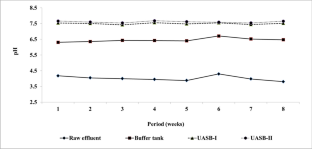Biomass Conversion and Biorefinery ( IF 4 ) Pub Date : 2024-04-09 , DOI: 10.1007/s13399-024-05581-7 M. Selvamurugan , P. Doraisamy , M. Maheswari , K. Valliappan

|
Distillery spentwash from molasses-based alcohol distilleries poses a significant challenge to the Indian distilleries and the environment. Generating energy, utilizing it as fertilizer in agriculture, and using it as a growth medium for algal production are potential methods for recovering resource from the spentwash. This study primarily focuses on achieving a circular bioeconomy in the treatment and disposal of distillery spentwash. The term circular-bioeconomy underscores the integration of biological processes into the circular economy framework. In this context, the study contributes to the circular economy by not only addressing the challenge of distillery spentwash but also by incorporating biomethanation and recycling of biomethanated distillery spentwash (BDS) as organic fertilizer in agriculture, as well as algal biomass production in BDS. Biomethanation was performed at different hydraulic retention times (HRTs) using upflow anaerobic sludge blanket (UASB) reactor; a HRT of 6 days was optimum. Based on laboratory findings, full-scale UASB reactors were operated for 6 days HRT. Throughout the study period, reactors operations remained stable, with 63.09 to 65.61%, 72.59 to 77.31%, and 58.39 to 60.02% reductions in chemical oxygen demand (COD), biochemical oxygen demand (BOD), and total solids (TS), respectively, at an organic loading rate (OLR) of 2.40 to 4.52 kg COD m−3 day−1. Field experiments with groundnut and sugarcane demonstrated that BDS could serve as a valuable source of plant nutrients, sustaining crop yields, soil productivity, and soil health without polluting the soil and ground water. The use of a growth medium comprising BDS is a cost-effective alternative for treating distillery spentwash and simultaneously producing Spirulina sp. on a large scale.
Graphical Abstract
中文翻译:

在处理和处置酿酒厂废液方面实现循环生物经济的综合方法
以糖蜜为原料的酒精酿酒厂的酿酒废液对印度酿酒厂和环境构成了重大挑战。产生能量、将其用作农业肥料以及将其用作藻类生产的生长介质是从废水中回收资源的潜在方法。这项研究主要侧重于在酿酒厂废液的处理和处置中实现循环生物经济。循环生物经济一词强调将生物过程纳入循环经济框架。在此背景下,该研究不仅解决了酿酒厂废液的挑战,还通过将生物甲烷化和生物甲烷化酿酒厂废液(BDS)回收作为农业有机肥料以及BDS中的藻类生物质生产,为循环经济做出了贡献。使用上流式厌氧污泥床(UASB)反应器在不同的水力停留时间(HRT)下进行生物甲烷化; 6 天的 HRT 是最佳的。根据实验室研究结果,全尺寸 UASB 反应器运行了 6 天的 HRT。在整个研究期间,反应器运行保持稳定,化学需氧量(COD)、生化需氧量(BOD)和总固体量(TS)分别降低了63.09%至65.61%、72.59%至77.31%和58.39%至60.02% ,有机负荷率(OLR)为2.40至4.52 kg COD m -3 day -1。花生和甘蔗的田间实验表明,BDS 可以作为植物营养的宝贵来源,维持作物产量、土壤生产力和土壤健康,而不污染土壤和地下水。使用包含 BDS 的生长培养基是处理酿酒厂废液并同时生产螺旋藻的一种经济有效的替代方案。大范围上。



























 京公网安备 11010802027423号
京公网安备 11010802027423号